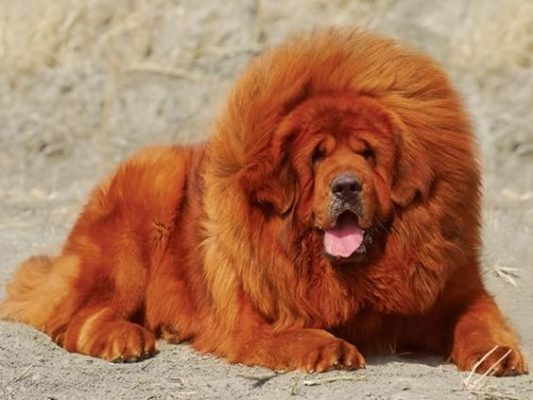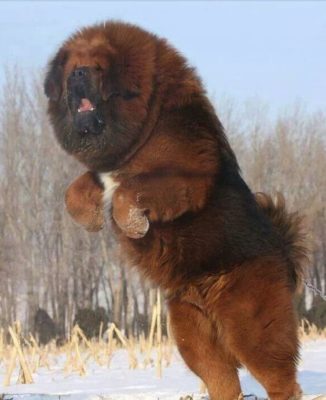Tibetan Mastiff
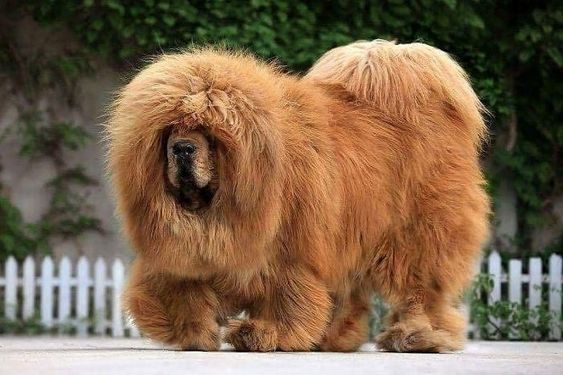
These dogs are real night hunters; they sleep most of the day and guard the house at night. The pets are considered great protectors and guards. The Tibetan Mastiff is poised, confident, has a good memory and excellent defense skills. He wants to be treated as his equal, respected, and loved.
Table of Contents
Breed Information
| Another Name | – |
| Origin | Tibet |
| Height | Males from 66 cm Females from 61 cm |
| Weight | Males 45-73 kg Females 34-55 kg |
| Fur | Straight, rigid |
| Color | Black, black and tan, brown, gray, and gold |
| Lifespan | 10-12 years |
| FCI Classification | Pinscher and Schnauzer – Molossoid and Swiss Mountain and Cattledogs |
| Group | Watchdogs, dogs for protection (guard dogs) |
| Price | $1500-6500 |
Breed Photos
Origin History
The origin of the Tibetan Mastiff is very ancient. Representatives of the breed lived in Tibetan monasteries and also helped people who lived in the Himalayan mountains.
The first mentions of the dog were made back in ancient times. Aristotle himself described the strength and beauty of the Tibetan mastiff.
Many famous cynologists have studied and researched this wonderful breed. A theory says that it is the Tibetan Mastiff that is the ancestor of all Molosser breeds.
The Tibetan Mastiff first appeared in Europe in 1847 as a gift from India’s Viceroy to Queen Victoria. In 1931 the Association of Tibetan Dog Breeds was established. In the same year, scientists officially formulated the first breed standard for the Tibetan Mastiff.
Nowadays, the Tibetan Mastiff is not a very popular dog; people often breed it. Most often, Tibetan Mastiffs live in kennels.
Appearance
The Tibetan Mastiff is a huge dog. But even despite its enormous size, it still looks very harmonious. The dogs have a sexual dimorphism: males are taller and more powerful than females. A male dog’s height can be from 66 cm, the minimum height of bitches – 61 cm. Male body weight can be from 45 to 73 kg, the weight of bitches – from 34 to 55 kg.
The head of the Mastiff is solid and heavy, and the muzzle is broad. If the dog is worried, the ears are raised but in the normal position, only slightly droop forward.
A mane is formed on the neck, which is more noticeable in male dogs than in bitches. The hair of the dog is straight and stiff; there is a thick and tightly fitting undercoat. On the limbs, there is a fleece. The colors can be black, black and tan, brown, sable, gray, and golden.
Character
These dogs are real night hunters; they sleep most of the day and guard the house at night. The pets are considered great protectors and guards.
The Tibetan Mastiff is poised, confident, has a good memory and excellent defense skills. He wants to be treated as his equal, respected, and loved.
Representatives of the breed do not have excessive aggression and anger; they behave nobly and refined. It is not common for them to bark for no reason and “quarrel” with other dogs.
They have a well-developed intuition; they feel the mood of the owner. With other animals in the house, they live amicably and perceive them as members of their pack. It is worth taking care that the Tibetan Mastiff is not bored because he can start to harm the house and chew on household items.
Care
The best place to live is a spacious enclosure with the possibility of access to the yard. The Tibetan Mastiff’s hair tolerates all weather conditions well, so even in fierce winters, it can stay in an enclosure without problems.
Twice a week, you should brush your pet’s coat and remove dead hair. Regularly check the eyes, ears, and teeth for dirt. Approximately once a month, you should trim your dog’s nails. It is forbidden to cut the hair of the Tibetan Mastiff; it can negatively affect his health.
Training
The Tibetan Mastiff has a strong character. He is independent and tends to make all decisions in life on his own. He is difficult to obedience and patient during training. Therefore, it is better to ask for help from professionals.
The most important thing in training is to build a relationship with his master so that the dog trusts him entirely and sees him as a leader. The Tibetan Mastiff is not suitable for people who have not yet had experience raising a dog.
Full training can take about two years, so it’s essential to remain patient and not stop training even if the dog is not enthusiastic.
Common Diseases
The Tibetan Mastiff has good health and a robust immune system. They have excellent stamina and have almost no genetic diseases.
However, you need to monitor the condition of the ears carefully, as ear infections are possible. There are also cases of decreased thyroid function, hip dysplasia, and osteochondrosis.
Nutrition
During growth, your dog needs to add plenty of calcium to his diet to strengthen his bones and joints. Adult pets can be fed either dry food or natural food. Do not give your dogfish spicy, salty, fatty, sweet, smoked, nuts, or raw eggs.
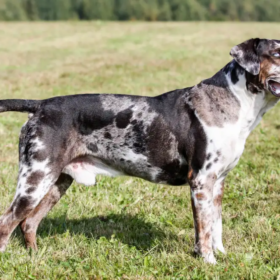 Catahoula Leopard Dog
Catahoula Leopard Dog Wirehaired Vizsla
Wirehaired Vizsla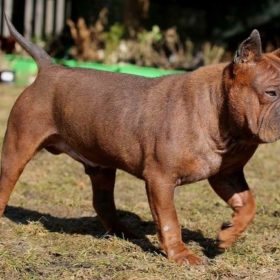 Chinese Chongqing Dog
Chinese Chongqing Dog Pembroke Welsh Corgi
Pembroke Welsh Corgi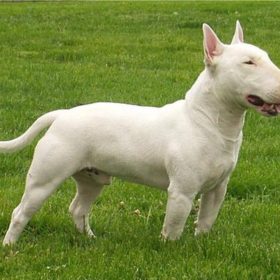 Bull Terrier
Bull Terrier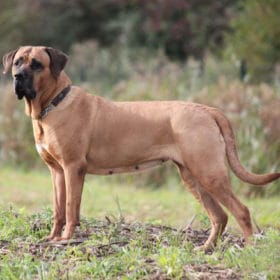 Tosa
Tosa
